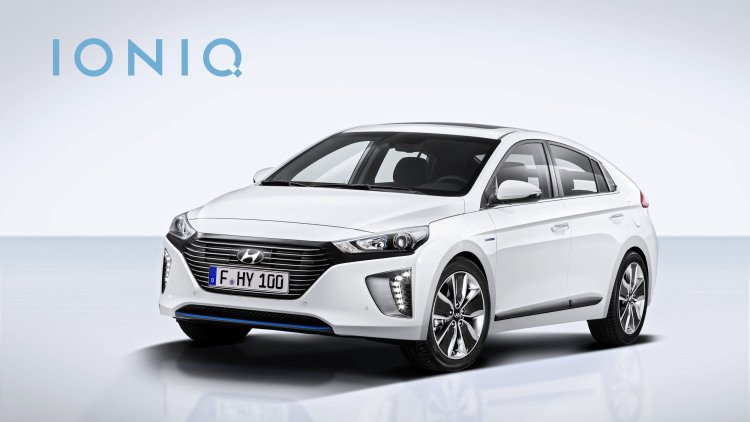Hyundai Ioniq Launches in Korea Before Challenging Prius in US

Deriving its name from an amalgamation of "ion" and "unique," the new Ioniq bears a shape largely dictated by aerodynamic requirements, helping the Ioniq achieve a drag coefficient of just 0.24, and lending it a similar appearance to the Chevy Volt, Toyota Prius, and Honda Insight. Unlike those vehicles, Hyundai will offer a fully electric version of the Ioniq at some point in the future. For the time being, the manufacturer has only detailed the hybrid version.
The powertrain is built around a new 1.6-liter four-cylinder Kappa engine rated at 104 horsepower and 108 pound-feet of torque. It's paired to an electric motor that's good for another 43 hp, giving the system a combined output of 139 hp and as much as 195 lb-ft, transmitting power through a new six-speed dual-clutch transmission with a lithium-ion polymer battery pack, hidden under the flat-folding rear seat to maximize passenger and cargo space, supplying the electric motor.
Hyundai isn't saying how far or how fast the Ioniq hybrid will travel, but has disclosed that it will travel on electric mode at speeds of up to 75 miles per hour. To further its range, the automaker fitted an efficient HVAC system, mounted low-rolling resistance tires, and developed a system that predicts energy requirements based on the programmed route and on traffic patterns to optimize charging and required level of gas engine assistance. It also made the vehicle as light as possible, using high-strength steel for the structure and aluminum for non-structural panels. Even the cargo cover is 25 percent lighter than a conventional one, and the construction uses a variety of renewable and recycled materials like (sugar cane and soybean oil) that are both environmentally friendly and lighter. A mixture of recycled plastic, powdered wood and volcanic stone serves to make the door panels 20 percent lighter than conventional materials, for example.
Though the focus here is clearly on efficiency, Hyundai claims the Ioniq will be a sportier drive than its competition. It features a quicker steering rack and both Eco and Sport (which holds gears longer for better performance) modes for the transmission. The interior is designed to feel high-tech, with a 7-inch instrument display, inductive wireless phone charging, and both Apple CarPlay and Android Auto compatibility. And of course it features all the latest safety systems you'd expect from such a high-tech vehicle, like blind spot warning, lane-keeping assist, and autonomous emergency braking.
We're looking forward to seeing the new Ioniq in the flesh in March, when it debuts at both the New York Auto Show and Geneva Motor Show.
Related News


